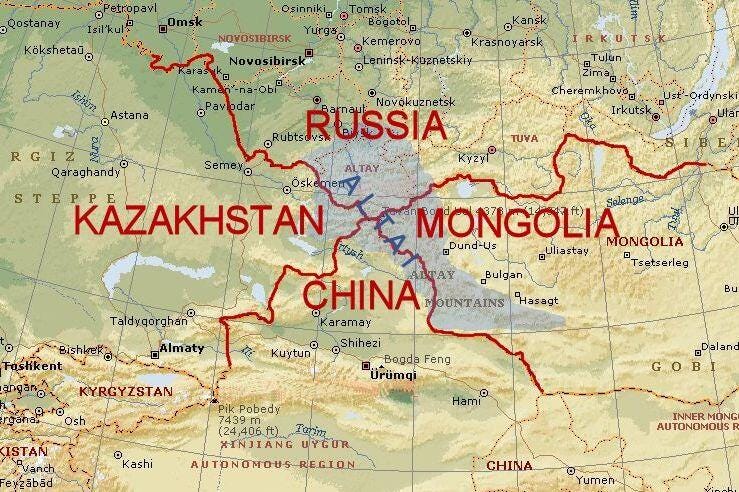In my corner of the world, winter means more than cookies and stockings—it’s the season of skis, snow, and downhill dynamism. Don’t get me wrong; I’m hot for Santa too. But social trust might just be the real reason for the season. Skiers casually leave expensive gear unattended, boots scattered like breadcrumbs, confident everything will still be there after lunch. Try that at a basketball court!
What is this invisible infrastructure that sustains these small acts of everyday faith? From rural American farm stands running on the honor system to Japanese children as young as seven confidently walking alone to schools, shops, or errands, some communities foster patterns of trust and cooperation that extend beyond family ties. Or maybe not. What if these are just some very extended, ancestral bonds?
The Altai Mountains in Asia reveal the earliest traces of humans gliding over snow, more than 5,000 years ago. By contrast, Africa’s snow-dusted peaks, like Kilimanjaro, show no evidence of snow travel before European contact. The icy peak selects its playmates like a Darwinian god. On the slopes, preparation and cooperation aren’t optional: snow slides bury the selfish, and frostbite mocks the foolhardy.
Today, winter sports demand collective investment: ski lifts, groomed trails, protective barriers, and predictable behavior from strangers hurtling through confined spaces at high speeds. We celebrate not only the mountains but also the gene-culture coevolution that turn the slopes into havens of unspoken order and camaraderie. From the Altai to the Alps, ancient elevation flattens the ego into something primal.
Hive Mind to the Summit
On the slopes, I hear my people. I don’t need to understand the words in German or Korean to know I’ve entered a microcosm of calculated cooperation. Here, we read the terrain, share resources, and plan routes together. Remote backcountry travel demands trust: trust in others to assist in emergencies, trust that information about conditions is accurate, and trust that no one assesses avalanche risk alone.
The magic isn’t in the snow but in the symphony. As researchers like Garett Jones argue, the network effects of intelligence amplify isolated efforts into collective force. A cautious skier tracing the crest isn’t just protecting himself; he is reinforcing a web of shared survival with those shaped by generations of cold winters. On the ridge, the risks demand mutual reliance, and the hive mind transforms danger into opportunity.
At the après-ski, I see my people. Ski pants come off to reveal bodies honed by harsh glacial ages. Epicanthal folds shield eyes from glare and icy winds, while narrower noses humidify and warm frigid air before it reaches the lungs. Fat, too, is cleverly distributed around the organs for insulation rather than piled onto protruding areas like the buttocks—a practical blanket against the cold, not an aphrodisiac.
Were generations of my forebears mummified on the mountains just for the BBC to bemoan the ‘unbearable whiteness’ of skiing? Granted, skiing comes with monetary barriers, but what of hiking or camping—pursuits requiring little more than shoes and curiosity? Yet these, too, are stigmatized by institutional tastemakers who judge the merits of a pastime not by its merits but by the measure of black African power.
A Zomia Of One’s Own
The anthropologist James Scott coined the term ‘Zomia’ to describe the vast, rugged highlands across south-central Asia. Taking refuge in the mountains from lowland states, Zomians created social networks so fluid and complex that bureaucracies could not map or control them. The same elevation that allows skiers to carve pristine paths also provided Zomia's outposts a strategic high ground from proto-DEI enslavement.
Conscription, taxes, epidemics, warfare: all powerful tools of state-building, but not for these refugees who scaled rough terrain to the highlands. With jungle janissaries in hot pursuit, Zomians burned bridges, ambushed mountain passes, and severed communication lines to maximize their isolation. Until 20th century technology forced submission upon them, these societies actively claimed their autonomy.
Sometimes it was like herding cats. The Shan States, perched on the edges of the lowland Burmese and Thai kingdoms, brokered trade agreements and mutual defense pacts among themselves, setting aside the narcissism of small differences to stay vigilant against larger threats. Identity formation often works this way: a shared enemy is a far easier banner to rally around for survival than a shared culture.
The Rising Tide of the Tropics
In 2007, John Derbyshire, an Asian-Aryanist avant la lettre, floated the idea of an ‘Arctic Alliance.’ He noted that the great conflicts of the 19th and 20th centuries were largely ‘intra-Arctic’ and that modern challenges like collapsing birthrates primarily affected ‘civilized’ White and Asian populations. Could the clever and cooperative overcome their rivalries to confront shared crises? Could we give peace a chance?
His entreaty seems quaint today, as Chinese and Indian soldiers beat each other with sticks over a disputed border in the Himalayas. Perhaps both parties should take a trip to their respective ski lodges and observe the joy of a sport undiluted by constant vigilance. When theft and opportunism aren’t part of the equation, forward-looking peoples focus on growing the pie rather than grabbing a larger slice of what’s stale.
Yet global warming and technological abundance have spread tropical sloth and hot-headed defection across the Karakoram Range. Like a real-life Prisoner’s Dilemma, the lure of short-term territorial gains strangles the potential for a mutually beneficial relationship. When fruit falls from trees into our hands, it’s easy to feel that every minor grievance deserves an audience; every petty court a Ketanji Brown Jackson.
Maybe the ice and scarcity that shaped the many faces I love will never return. Or maybe we’ll live to see the next phase in the familiar cycle where hardship builds strength, only for prosperity to dull it. This cleansing fire might look more like an snowstorm. The crests and ridges forged us, teaching that freedom isn’t found in isolation but in pooling wisdom into goodwill for the future. On the slopes, we all fam.






Snow selection, cool. Maybe global warming is bad after all